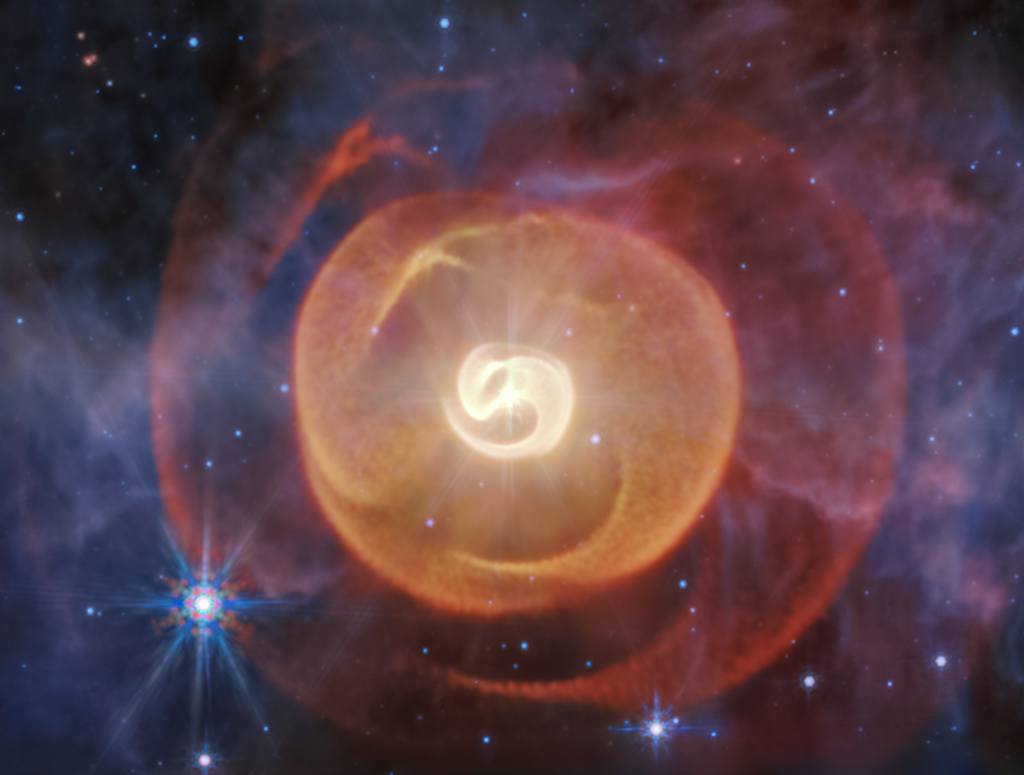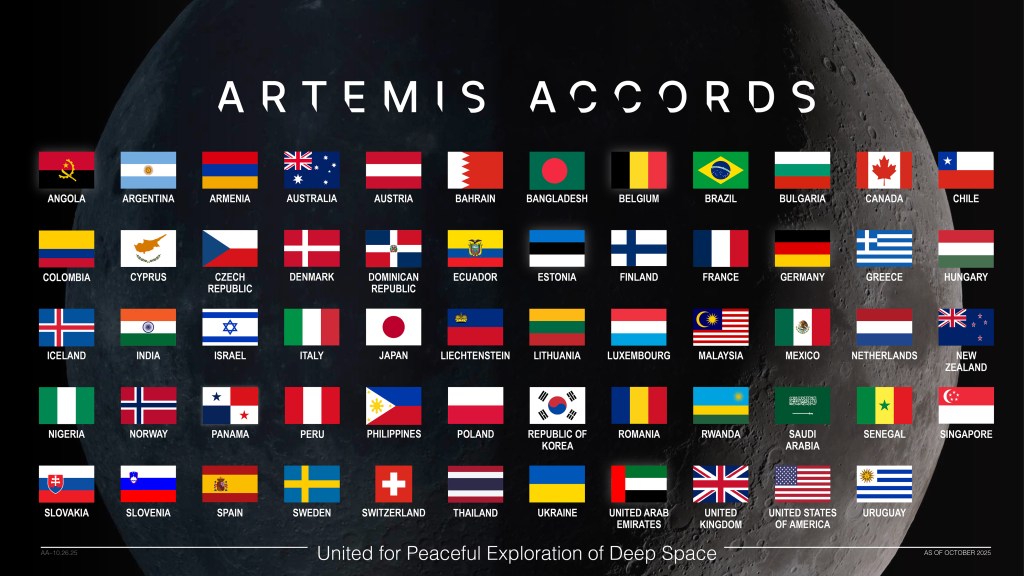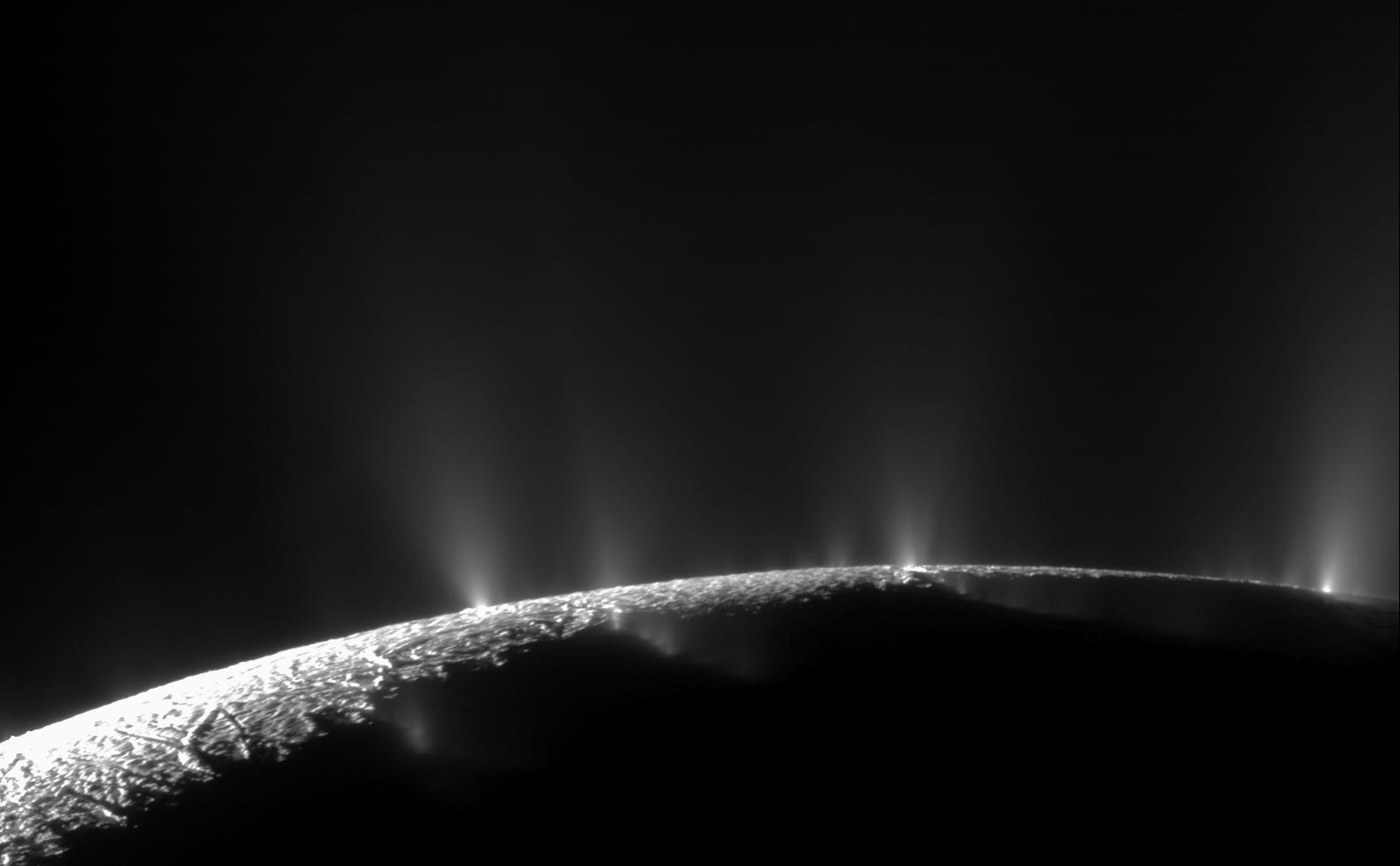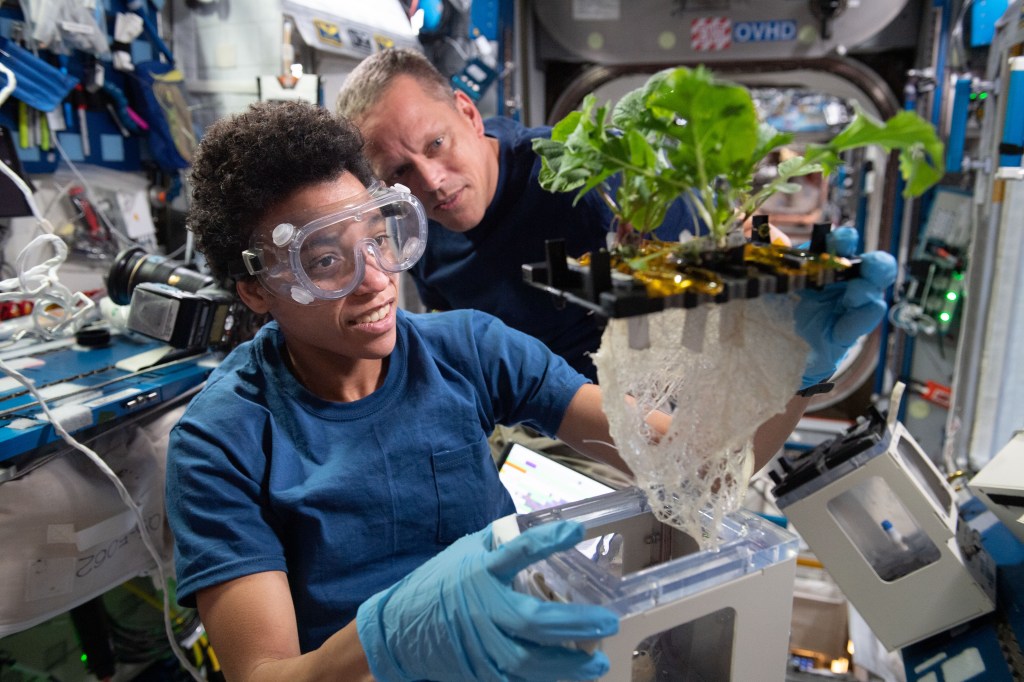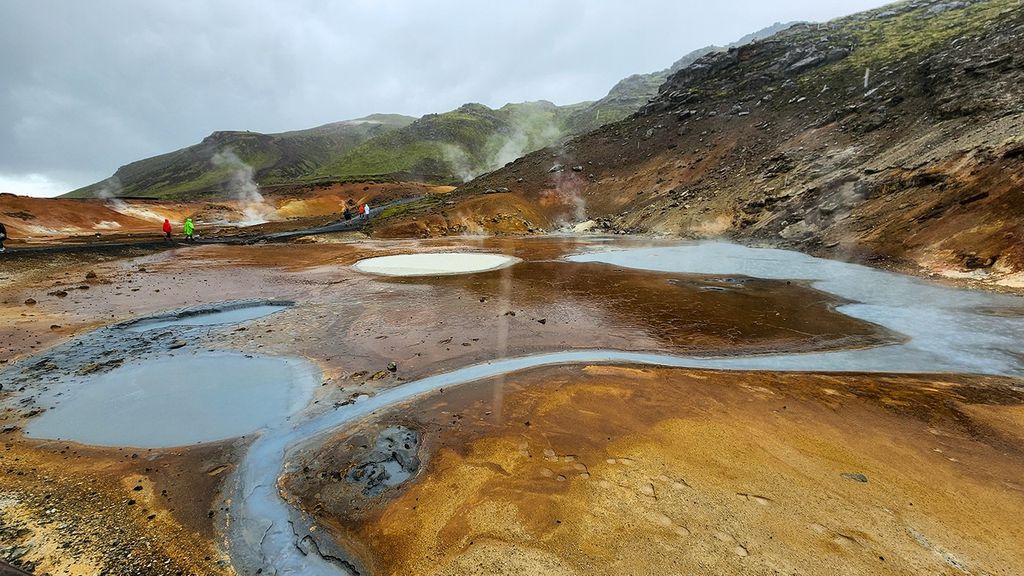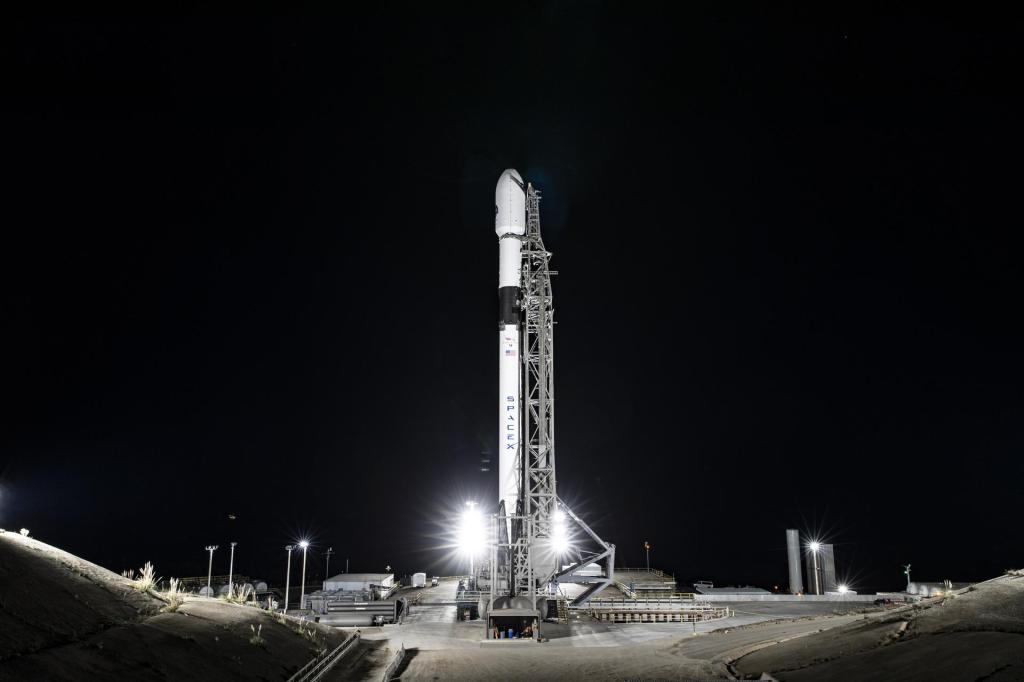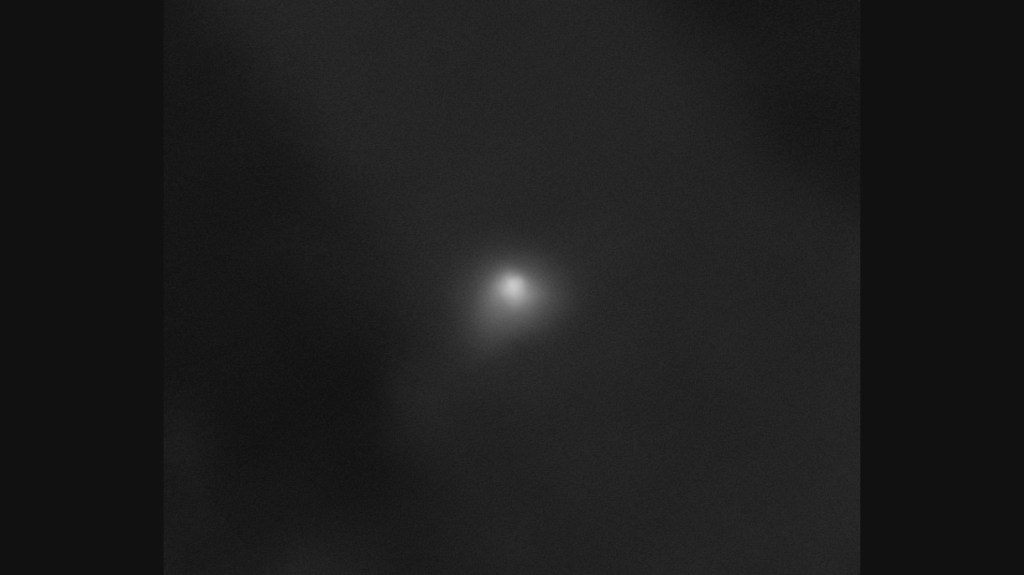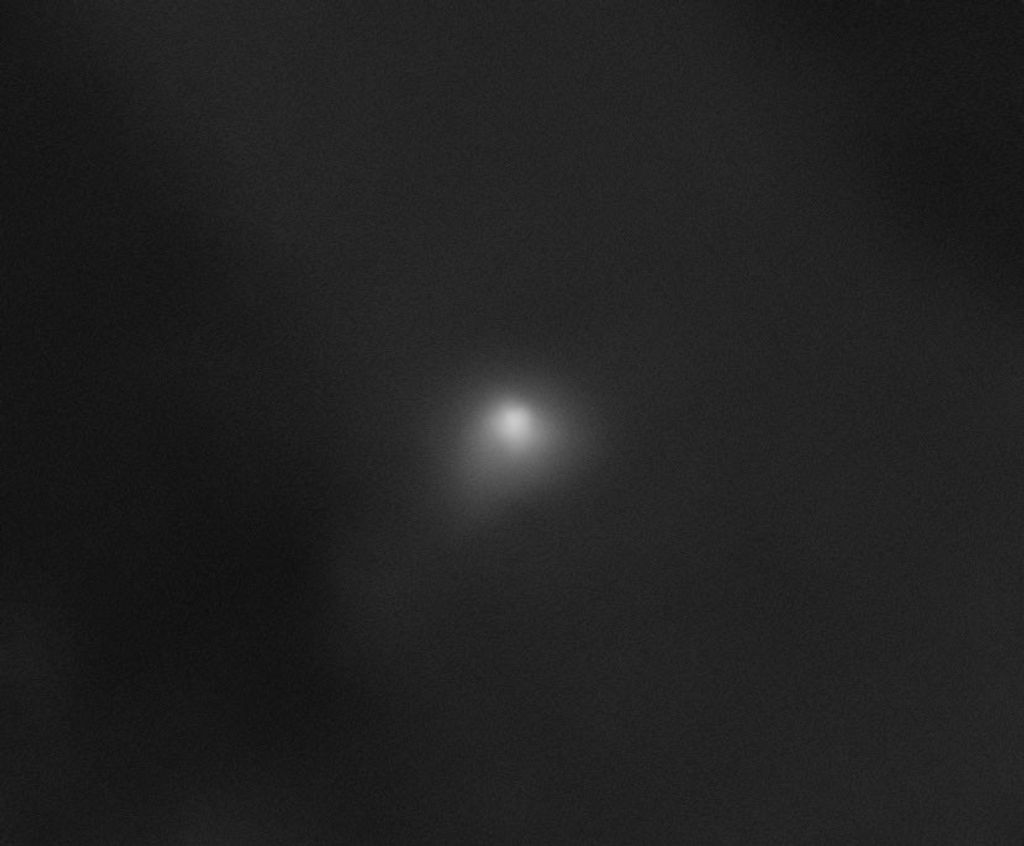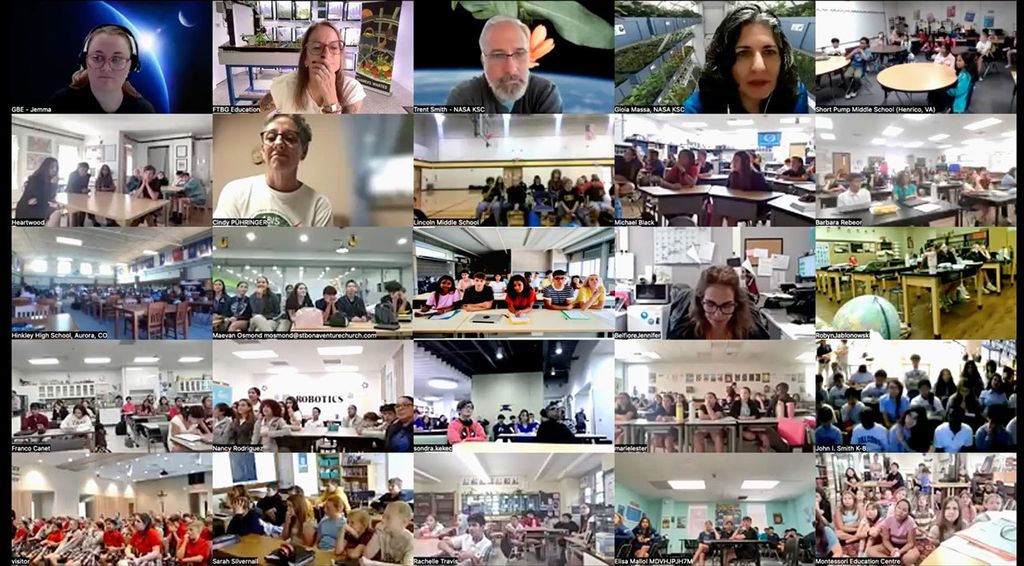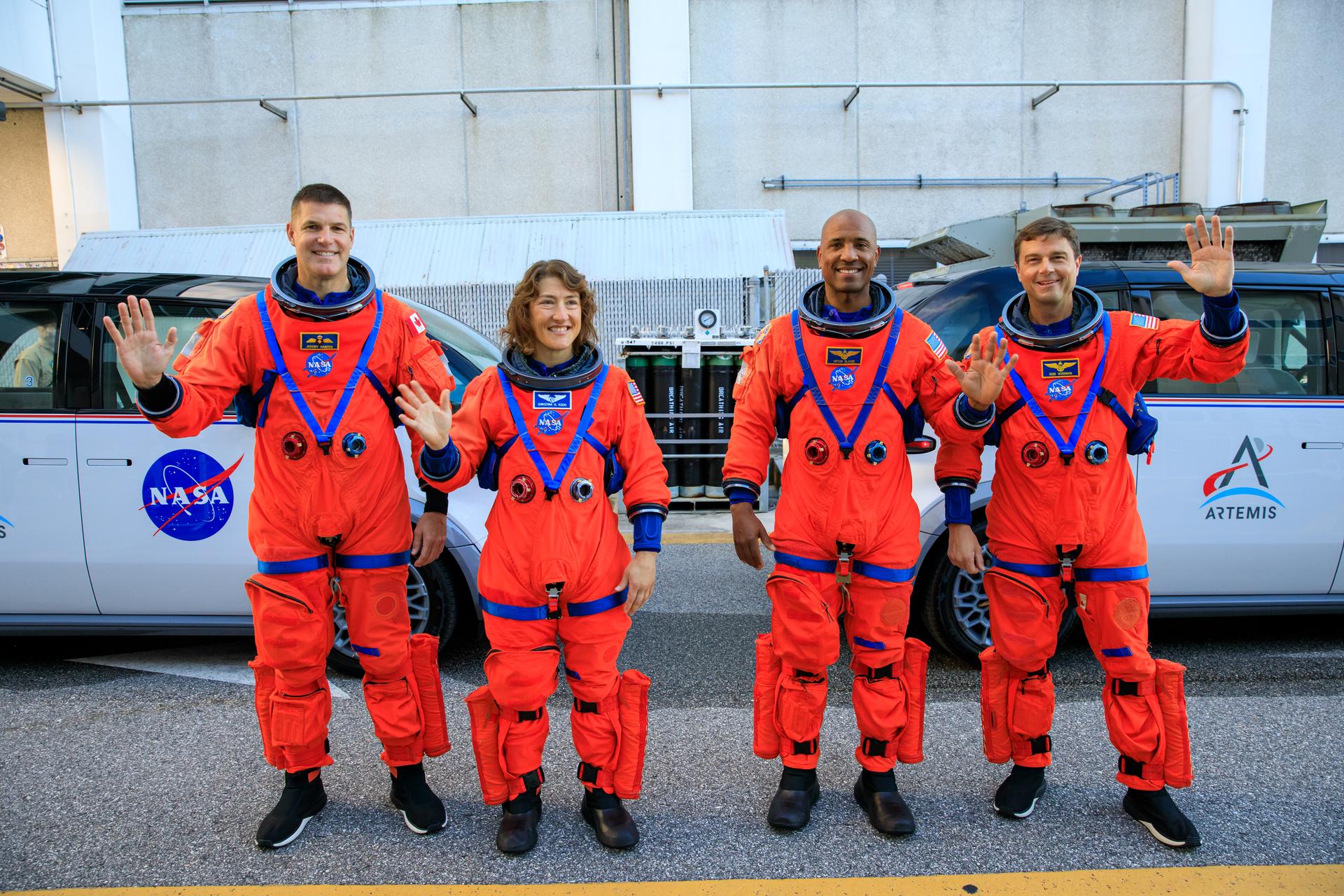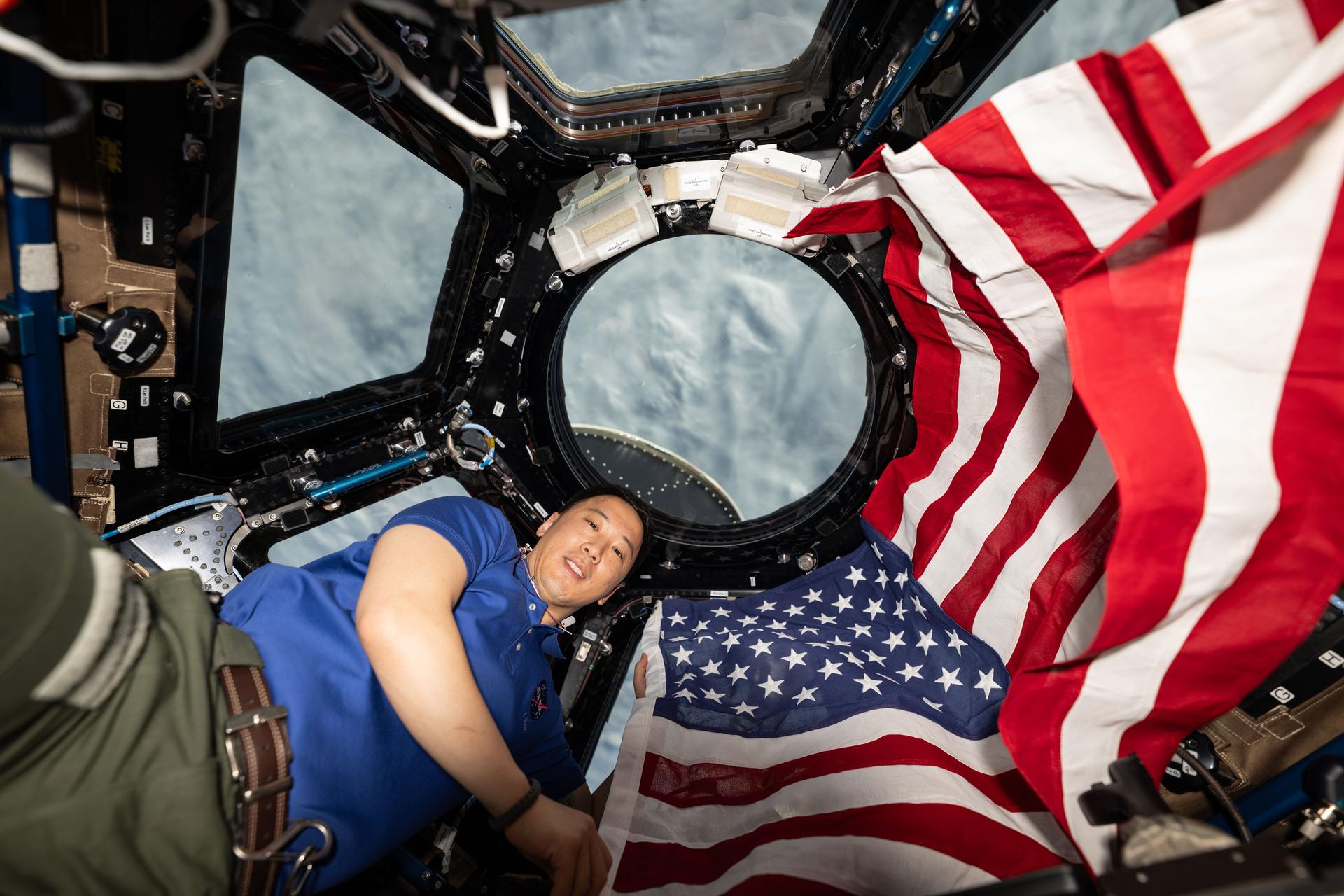

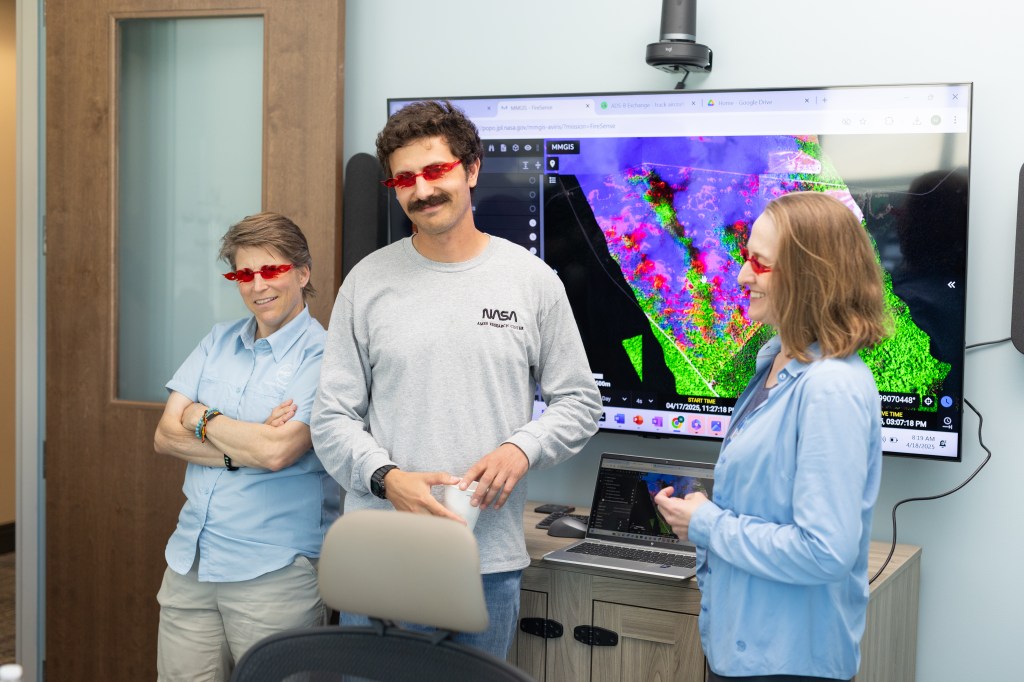
2021 Ames Earth Science Highlights
January 2021
| January 6 |
| OpenET, the Ames-led multi-agency water management information system providing easily accessible satellite-based estimates of evapotranspiration (ET) to applications end-users, has received recent attention on Capitol Hill and in western regional government offices. |
| The NASA Applied Sciences Program’s annual highlights for 2020 featured two Ames projects (out of eight highlights): OpenET (co-led by Forrest Melton) and the Navajo Nation Indigenous Peoples water management pilot capacity building project (led by Amber McCullum). |
| NASA Ames Earth Science Division researchers will be highly engaged in the 101st American Meteorological Society (AMS) Annual Meeting, held virtually 10-15 January 2021. Our researchers are giving 7 oral and 2 poster first-author presentations and numerous co-author presentations (including invited presentations), as well as convening sessions. |
| January 13 |
| The Ames Aerobiology Laboratory (co-directors Diana Gentry in Earth Science, and David Smith in Space Biosciences) was featured by MSN based on a press article from SPACE.com. It showcased requirements for habitability of planetary atmospheres, including Venus, and how these are informed by biological analysis of samples from Earth’s atmosphere, inspired by a Press Roundtable at the 2020 American Geophysical Union Fall Meeting. |
| NASA Ames Earth Science Division researchers are highly engaged in the 101st American Meteorological Society (AMS) Annual Meeting, held virtually 10-15 Jan 2021. Ames scientist are giving 7 oral and 2 poster first-author presentations and numerous co-author presentations (including invited presentations), as well as convening sessions. |
| January 20 |
| The Student Airborne Science Activation (SaSa) project will hold its virtual kickoff meeting on 25 and 26 January. SaSa is a 5-year SMD Science Activation program led by Charles Gatebe that aims to cultivate students from minority-serving institutions (MSIs) in STEM fields by exposing them to NASA airborne science through an 8-week internship. |
| Florian Schwandner will give a webinar presentation with Q&A, on regional scientific collaboration in the Asia-Oceania region on 27 January to the AOGS (Asia Oceania Geoscience Society) community. Schwandner is currently president of the Solid Earth section of AOGS. |
| A publication by Robert Chatfield and colleagues on Western U.S. wildfire emissions enables right-sizing previously hard to constrain pollutant emission factors using a rigorous theoretical approach called Mixed-Effects Regression Emission Technique (MERET), with SEAC4RS and ARCTAS forest fire plume observational data. |
February 2021
| February 3 |
| A new paper in Nature Communications, led by NASA Earth Exchange (NEX) team member Hirofumi Hashimoto, demonstrates how new satellite sensors in geostationary orbit enable tracking seasonally changing vegetation greenness in the notoriously cloudy Amazon evergreen rainforest. |
| The SMD Earth Science Division Director Karen St. Germain briefed the U.S. House Committee on Science, Space and Technology on 2 February. She highlighted two Ames-led projects: OpenET, the multi-agency water management information system, and SARP, the Student Airborne Research Program providing undergraduate research experience in NASA airborne science projects. |
| February 17 |
| The MASTER (MODIS-ASTER Airborne Simulator) team from the Airborne Sensor Facility (ASF) at Ames continues to support the NASA JPL-led 2021 Western Diversity Time Series (WDTS, formerly HyspIRI) on the ER-2 out of AFRC. The flight on 10 February 2021 imaged the Santa Barbara, CA, coastline and channel islands. |
| February 24 |
| A landmark study on surface imaging algorithms was published in Remote Sensing of Environment by a team of 130 scientists on the 2017 Earth Science Decadal Survey’s designated observable study on Surface Biology and Geology (SBG), with significant contributions by several Ames Earth Science co-authors. |
| The Ames Earth Science Division’s Laboratory for Advanced Sensing (LAS) led by Dr. Ved Chirayath was issued a new patent for its fluid lensing technology: U.S. Patent No. 10,929,966, “System and Method for Imaging Underwater Environments Using Fluid Lensing”. Fluid lensing technology in FluidCam and other imaging systems enables extremely detailed shallow marine subaqueous mapping, including reef ecosystems, from airborne platforms. This technology is featured prominently in the global citizen science initiative NeMO-Net (Neural Multi-Modal Observation and Training Network). |
| A new study was published in Atmospheric Measurement Techniques by Charles Gatebe et al., demonstrating a novel airborne measurement approach for assessing satellite retrievals of aerosols above clouds, thereby helping fill a major gap in global aerosol observations. |
March 2021
| March 3 |
| Forrest Melton is invited to present to U.S. Senator Cortez Masto’s (NV) office and staff on OpenET for the Senate Committee on Energy and Natural Resources on 5 March 2021. |
| A $1.8M reimbursable Space Act Agreement was recently signed between NASA Ames and the California Division of Boating and Waterways (DBW), for freshwater invasive aquatic species research conducted by David Bubenheim’s group in the Earth Science Division. |
| March 10 |
| Vince Ambrosia participates in and presents at the invitation-only Workshop on wildfires: “Real Time Detection and Tracking of Fires that Matter”, hosted by the Keck Institute for Space Studies (KISS) at Caltech, 11-12 March, 2021. |
| Matt Fladeland and Florian Schwandner are plenary presenters and on the organizing committee for the NASA Earth Surface & Interior (ES&I) and Earth Science & Technology Office (ESTO) UAS (Uncrewed Aerial Systems) Workshop, logistically supported by ESPO, 9-11 March, 2021. |
| March 17 |
| Some of the 28 students chosen for this year’s Student Airborne Research Program (SARP) are already hitting the news in their proud home communities. Minority-serving institutions are well represented in this year’s selection. |
| Ved Chirayath’s NeMO-Net citizen science app to help map and classify coral species was featured in an article in the Pacific Daily News on 13 March 2021. |
| March 24 |
| Ryan Spackman and Florian Schwandner met with California state agencies (CNRA, CalEPA, CDFA) and JPL to explore a more coordinated science and technology response to the region’s wildfire and drought threat. |
| The Western Diversity Time Series (WDTS) ER-2 flights continue out of AFRC with AVIRIS (JPL) and MASTER (ARC). The team has now completed 4 science flights as well as 1 functional check flight. |
| March 31 |
| The Western Diversity Time Series (WDTS) campaign completed three ER-2 flights over California last week out of AFRC with AVIRIS (JPL) and MASTER (ARC) instruments, imaging wildfire scars and the Bay area, among other targets. |
| Ames Earth Science Division DEVELOP Interns presented their research results “Northern Great Plains Disasters – Using Earth Observations and Google Earth Engine to enhance flood monitoring on tribal lands in the northern Great Plains” to a multi-center audience. |
April 2021
| April 8 |
| Rama Nemani – Director of the NASA Earth Exchange (NEX) – delivered a presentation to Steve Jurczyk on cutting-edge data products from geostationary satellites for wildfire management at the NASA Ames supercomputing facility on 6 April 2021. |
| The Western Diversity Time Series (WDTS) field campaign concluded the winter/spring campaign season successfully, imaging parts of southern California with AVIRIS (JPL) and MASTER (ARC) on the ER-2 flying from AFRC. |
| Vince Ambrosia was invited to speak about remote sensing approaches to wildland fires in the Commercial Space Lecture Series of the Space Portal Office on 7 April 2021. |
| The proposed Oregon State House Bill HB2018 would let state water regulators adopt OpenET, the online platform to make satellite data on evapotranspiration accessible to farmers, landowners and water managers, in order to help curb overpumping. |
| April 15 |
| Forrest Melton has been selected to join NASA Senior Climate Advisor Gavin Schmidt’s new NASA Climate Committee. Melton is the Western Water Applications Office (WWAO) chief scientist and leader of the OpenET project. |
| Earth Science Projects Office (ESPO) staff recently visited an Air National Guard facility at Luis Muñoz Marín International Airport in Puerto Rico, for hosting operations for a part of the CPEX-AW campaign teams and aircraft. |
| The COMA (Carbon Monoxide Measurement & Analysis) payload instrument for the 2021-2022 ACCLIP (Asian Summer Monsoon Chemical and Climate Impact Project) airborne campaign has successfully completed its second TVAC test series in the Ames EEL (Engineering Evaluation Laboratory). |
| April 22 |
| Don Sullivan was selected to represent Ames Research Center and co-represent SMD in the agency’s Digital Transformations thrust, as a member of the Working Group on Standards. |
| SpaceRef highlighted a press release with the Airborne Sensor Facility’s (ASF) MODIS/ASTER Airborne Simulator (MODIS), which imaged wildfires, burn scars, land use and ecological health from the vantage point of the high-altitude NASA ER-2 research aircraft during the Western Diversity Timeseries (WDTS) campaign operated jointly by Ames, JPL, and AFRC. |
| Diana Gentry has been invited by the Chair of the Venus Panel of the National Academy of Sciences Planetary Science and Astrobiology Decadal Survey to present in an upcoming open session hosted by the Space Studies Board on “the Habitability of the Venus Atmosphere.” |
| April 29 |
| 22 April 2021 was Earth Day! NASA.gov highlighted four key stories under their Earth Day post “From Sea to Space, NASA in Silicon Valley Works for Our Changing Earth”, with two from the Ames Earth Science Division, one on NeMO-Net, and one on Remote Sensing capacity building for Indigenous Communities. |
| The NeMO-Net team of the Laboratory of Advanced Sensing (LAS) just published a milestone article in Frontiers in Marine Science which was promptly covered in the press by SpaceRef on 25 April 2021 “NASA NeMO-Net Video Game Helps Researchers Understand Global Coral Reef Health”. |
May 2021
| May 6 |
| Ames is co-chairing the twice-annual Tactical Fire Remote Sensing Advisory Committee (TFRSAC) on 11-13 May 2021. Registration so far includes approximately 300 participants in the national and international fire community from NASA and other government agencies, academia, and the private sector. This meeting will include an additional day to introduce NASA aeronautics capabilities to the broader wildfire community represented by the TFRSAC constituency. |
| May 13 |
| Vince Ambrosia is co-chairing the twice-annual TFRSAC Workshop (Tactical Fire Remote Sensing Advisory Committee, virtual), 11-13 May 2021. 290 participants span the national and international fire community from NASA, other government agencies, academia, and the private sector. |
| Ved Chirayath presented “NeMO-Net – The Fluid Lensing Neural Network for Global Coral Reef Assessment“ on 13 May 2021 at the Earth Science Technology Forum 2021 (ESTF2021). |
| Airborne and shipborne activities managed by ESPO are increasing as the pandemic begins to wane in the U.S. The Earth Venture Suborbital 3 (EVS-3) project Dynamics and Chemistry of the Summer Stratosphere Science (DCOTSS) began integration of instruments onto the ER-2 at AFRC this week in preparation for the July deployment out of Salina, Kansas. The EVS-3 project Sub-Mesoscale Ocean Dynamics Experiment (S-MODE), managed by the Earth Science Project Office (ESPO) at Ames, had their first successful set of flights last week aboard AFRC’s B200 aircraft (NASA 801). The EXport Processes in the Ocean from RemoTe Sensing (EXPORTS) international shipborne field campaign (SMD’s Ocean Biology & Biogeochemistry Program) has set sail for its 2021 deployment out of Southampton, UK. |
| May 20 |
| The EVS-3 project S-MODE (Sub-Mesoscale Ocean Dynamics Experiment), managed by the Earth Science Project Office (ESPO) at Ames, had their first successful set of flights from southern California. |
| 19 May 2021: Diana Gentry presents an invited overview on “The Habitability of the Venus Atmosphere” in a Space Studies Board hosted session, invited by the Chair of the Venus Panel for the Planetary Science and Astrobiology Decadal Survey of the National Academy of Sciences, Engineering and Mathematics. |
| May 27 |
| Karen Saint Germain, the director of the SMD Earth Science Division, visited the Ames Earth Science Division in person on 21 May 2021. |
| Ved Chirayath has been selected as a 2021 Emerging Explorer by the National Geographic Society. |
June 2021
| June 3 |
| The recent paper in Nature Communications by Hirofumi Hashimoto et al. was featured in NASA Earth Observatory as the Image of the Day on 1 June 2021, currently appearing on the front page of their website. |
| The ESPO-managed Earth Venture Suborbital 3 (EVS-3) project Dynamics and Chemistry of the Summer Stratosphere (DCOTSS) continues integration of instruments onto the ER-2 research aircraft at AFRC in preparation for June test flights and a July deployment out of Salina, Kansas. |
| June 10 |
| The ESPO-managed Earth Venture Suborbital-3 (EVS-3) investigation Dynamics and Chemistry of the Summer Stratosphere (DCOTSS) completed integration of instruments onto the ER-2 at AFRC and conducted a first successful test flight on 9 June, in preparation for the July deployment out of Salina, Kansas. |
| ARC hosted the Surface Biology and Geology (SBG) smallsat constellation pathfinder requirements virtual workshop that brought together scientists, mission managers and other specialists to refine the pathfinder objectives and resulting requirements. Ian Brosnan was primary host for this ARC-JPL-GSFC-HQ event. |
| June 17 |
| Ved Chirayath’s NeMO-Net team is partnering with the US-based environmental organization Khaled bin Sultan Living Oceans Foundation (KSLOF), which is providing its entire data set of the 10-year Global Reef Expedition, one of the largest coral surveys ever undertaken by scuba divers, for NASA’s NeMO-Net. The data set will be used to help train the NeMO-Net neural network in classifying the world’s corals from remote sensing imagery. |
| The ESPO-managed Earth Venture Suborbital 3 (EVS-3) project Dynamics and Chemistry of the Summer Stratosphere (DCOTSS) integration of instruments onto the ER-2 at AFRC is complete. Two test and two science flights were successfully completed. |
| Chabot Space & Science Center director Adam Tobin and staff visited ARC on Wednesday to tour the campus and facilities. ARC leadership (Eugene Tu, Michael Hesse, and others) and Earth science participants (Ryan Spackman, Laura Iraci) gave a tour of the Alpha Jet that is managed by Blue City Holdings LLC through a partnership with NASA, and the Alpha Jet Atmospheric eXperiment (AJAX). |
| June 24 |
| Integration and test flights for the ESPO-managed Earth Venture Suborbital 3 investigation Dynamics and Chemistry of the Summer Stratosphere (DCOTSS) were completed successfully this past week at AFRC. The team will ferry to Salinas, Kansas, for the science campaign in July 2021. |
July 2021
| July 1 |
| Ved Chirayath and Juan Torres-Pérez are part of the Global Coral Watch Project led by the Smithsonian Institution. The project received official endorsement from the U.N. on World Oceans Day, 8 June 2021, as part of only few of hundreds of proposals. |
| This week concludes the advanced online training for the NASA ARSET Program: Using Google Earth Engine for Land Monitoring Applications led by Zach Bengtsson, Juan Torres-Pérez, and Amber McCullum. Nearly 2300 participants attended the first session. |
| July 15 |
| SMD’s inaugural Blue Ribbon High-Risk/High-Impact Review Panel selected Ved Chirayath & team’s MarineVERSE proposal, recently selected for funding under the ROSES 2020 Biodiversity program, for a high-risk/high-impact award. |
| DCOTSS: (EVS-3): The ESPO-managed Earth Venture Suborbital 3 (EVS-3) project Dynamics and Chemistry of the Summer Stratosphere (DCOTSS) integration and test flights were successfully completed in June at AFRC. |
| July 22 |
| The COMA (Carbon monOxide Measurement from Ames) instrument has passed Airworthiness Review and instrument and team are currently in transit to JSC/Ellington Field for integration and test flights on the NASA WB-57F aircraft in support of the ESPO-managed Asian Summer Monsoon Chemical & CLimate Impact Project (ACCLIP) field campaign. |
| The NASA ER-2 aircraft deployed to Salina, KS, for the ESPO-managed Earth Venture Suborbital 3 (EVS-3) project Dynamics and Chemistry of the Summer Stratosphere (DCOTSS) on 12 July 2021 and has now completed 2 science flights. |
| July 29 |
| The ESPO-managed Earth Venture Suborbital 3 (EVS-3) project Dynamics and Chemistry of the Summer Stratosphere (DCOTSS) began deployment with the ER-2 in Salina, KS DCOTSS and conducted several successful science flights. |
| The Earth Science Division is well represented again this year at the annual Asia Oceania Geoscience Society (AOGS) meeting, from 2-6 August 2021. Florian Schwandner, AOGS Solid Earth section president, is on the program committee and council of AOGS, is chairing a session on volcanology, and hosting several award lectures. Several members of the NASA Earth eXchange (NEX) team will be presenting their work on preprocessing and analysis of the new generation of geostationary satellite sensors in a dedicated session. |
August 2021
| August 5 |
| The Earth Venture Suborbital-3 investigation Dynamics and Chemistry of the Summer Stratosphere (DCOTSS) has successfully completed 6 science flights, for a total of 43 flight hours, on the NASA ER-2 from Salina, KS. |
| Integration activities on the NASA WB-57F continue for ACCLIP – Asian Summer Monsoon Chemical and Climate Impact Project – at Ellington Field at JSC. Test flights are planned for 11–18 August. Science flights are scheduled for summer 2022 in South Korea. |
| August 12 |
| The ESPO-managed Earth Venture Suborbital 3 project Dynamics and Chemistry of the Summer Stratosphere (DCOTSS) has passed the midpoint of deployment and completed eight science flights from Salina, KS. The NASA ER-2 is scheduled to ferry back to AFRC on 26 August 2021. |
| Test flight activities on the NASA WB-57F continue for ACCLIP – Asian Summer Monsoon Chemical and Climate Impact Project – at Ellington Field at JSC. Two successful test flights were completed in the last week. Science flights are scheduled for summer 2022 in South Korea. |
| August 19 |
| The NASA DC-8 arrived in St. Croix on Tuesday for the ESPO-managed Convective Processes Experiment – Aerosols & Winds (CPEX-AW) airborne investigation. The science team will be conducting science flight operations through the rest of August and September. |
| The ESPO-managed Earth Venture Suborbital-3 project Dynamics and Chemistry of the Summer Stratosphere (DCOTSS) has completed ten successful science flights as of 18 August from Salina, KS. The NASA ER-2 is scheduled to ferry back to AFRC on 26 August. |
| Integration and test flight activities on the NASA WB-57F for ACCLIP – Asian Summer Monsoon Chemical and Climate Impact Project – concluded this week at Ellington Field at JSC. Four test flights were successfully completed, culminating with a wingtip-to-wingtip rendezvous with the ER-2 that is supporting DCOTSS. ACCLIP science flights are planned for summer 2022 in South Korea. |
| August 26 |
| The NASA DC-8 has completed 3 science flights from St. Croix for the Convective Processes Experiment – Aerosols & Winds (CPEX-AW) field campaign managed by ESPO. The science team will be conducting science flight operations through the rest of August and September. |
| The deployment of the ESPO-managed Earth Venture Suborbital-3 project Dynamics and Chemistry of the Summer Stratosphere (DCOTSS) investigation is complete. The NASA ER-2 flew 11 science flights (77 hours) from Salina, KS. There were also 58 balloon launches and a coordinated ER-2 flight with the WB-57. The ER-2 returned to AFRC on 23 August and de-integration will be finished next week. |
September 2021
| September 2 |
| The Convective Processes Experiment – Aerosols & Winds (CPEX-AW) airborne investigation, managed by ESPO, continues to fly science from St. Croix. Six science flights have been completed on the NASA DC-8 as of today. Operations will continue through the end of September. |
| The 2021 deployment of the ESPO-managed Earth Venture Suborbital-3 investigation Dynamics and Chemistry of the Summer Stratosphere (DCOTSS) is complete. The NASA ER-2 returned from Salina, KS to AFRC and de-integration is underway and will be complete by the end of the week. A few more balloon sondes were launched during the week bringing the total for the campaign to 62 launches. |
| September 9 |
| The ESPO-managed Convective Processes Experiment – Aerosols & Winds (CPEX-AW) airborne investigation team continues to fly science flights from St. Croix. |
| Ved Chirayath and his NeMO-Net team will be interviewed in the second episode of the new TV series “Our Living Oceans” (EarthxTV) on “Reefs and Mapping”, airing 20 September 2021. |
| September 15 |
| The ARC Earth Science and Flight Operations Divisions are supporting USGS and BlackSwift LLC to fly the SBIR-developed S2 small uncrewed aircraft system (sUAS) out of Dutch Harbor Alaska to Makushin volcano, to demonstrate operational airborne observations of hazardous volcanoes under beyond visual line-of-sight (BVLOS) conditions. Successful science and BVLOS flights were conducted 11th through 14th September. |
| The Ocean Communication Engagement and Awareness using NASA Observations and Science for Hispanic/Latino students (OCEANOS) proposal submitted to the F.6 Science Activation Progam Integration (SciAct) ROSES21 call was selected for funding. OCEANOS will provide training to low-income, first-generation university and high school students in Puerto Rico. Students will be trained to use of NASA data for ocean/coastal assessments. |
| September 29 |
| The OpenET launch and media event with NASA HQ is now confirmed for 1 October 2021 at 10 am Pacific. OpenET led by Forrest Melton, provides operational field-scale information on evapotranspiration and consumptive use of water for the 17 states in the western U.S. |
| The Sub- Mesoscale Ocean Dynamics Experiment (S-MODE), an EVS-3 project managed by ESPO, is gearing up for deployment out of ARC. The ESPO team is currently setting up office space and IT network in Building N248 to support the planned arrival of the AFRC B200 and LaRC G-III aircraft at ARC on 18 October 2021. |
October 2021
| October 6 |
| The OpenET launch and media event, originally planned for 1 October 2021, will now be held live on 21 October at 10am Pacific. |
| IMPACTS: The Investigation of Microphysics and Precipitation for Atlantic Coast-Threatening Snowstorms (IMPACTS) EVS-3 investigation, managed by ESPO, has finalized payloads for the ER-2 and P-3 aircraft. |
| October 13 |
| NASA SBIR-funded uncrewed aircraft, under technical management by the Earth Science Division breaks endurance record of 8 days aloft. |
| Juan Torres-Pérez published an article in Frontiers in Marine Science, “River Streamflow, Remotely Sensed Water Quality, and Benthic Composition of Previously Undescribed Nearshore Coral Reefs in Northern Puerto Rico” that documents for the first time how increased sediment and pollutant yield from human land use change adversely affects the resilience of the rich reef ecosystems along northern Puerto Rico’s coast. |
| October 20 |
| OpenET, the Ames-led online tool that translates Earth observing satellite remote sensing data into actionable information for farmers on their irrigation needs, will officially launch Thursday 21 October 2021. A media event with NASA HQ is confirmed for 10:30 am Pacific. |
| NASA Administrator Bill Nelson, Deputy Administrator Pam Melroy, and Congresswoman Anna Eshoo visited Ames on 12 October 2021 to learn more about wildfire capabilities at the Center. Florian Schwandner discussed Ames Earth Science wildfire capabilities. |
| October 27 |
| OpenET – the the Ames-led online tool that translates Earth observing satellite remote sensing data into actionable information for farmers on their irrigation needs, officially launched Thursday 21 October 2021. |
| The Sub-Mesoscale Ocean Dynamics Experiment (S-MODE), an EVS-3 project investigation managed by ESPO, commenced science flights out of Ames Research Center. |
November 2021
| November 3 |
| The Sub-Mesoscale Ocean Dynamics Experiment (S-MODE), an EVS-3 project investigation, managed by ESPO, saw the B-200 successfully fly its 6th science flight out of Ames Hangar N248 on Thursday, 28 October 2021. |
| The C-HARRIER project (Coastal High Acquisition Rate Radiometers for Innovatve Environmental Research) led by PI Liane Guild conducted a first shakedown flight with the Coastal Airborne In-Situ Radiometers (C-AIR) on 26 October, and first Science flights 27-29 October. |
| Charles Gatebe will be giving a NASA Hyperwall Presentation “Student Airborne Science Activation for underrepresented and under-served learners” at COP26. |
| November 17 |
| IMPACTS (Investigation of Microphysics and Precipitation for Atlantic Coast-Threatening Snowstorms), an EVS-3 investigation managed by ESPO, is gearing up for deployment in January-February 2022. |
| Ju-Mee Ryoo published a landmark paper on the ORACLES (ObseRvations of Aerosols above CLouds and their intEractionS) Earth Venture Suborbital (EVS-2) mission that was led out of Ames, providing a meteorological overview of the ORACLES campaigns. |
| November 21 |
| Juan Torres-Pérez was named a Preferred Son of the City of Mayaguez, Puerto Rico in recognition of his contributions to the field of oceanography and for his continuous promotion of STEM Education in Puerto Rico and Latin America. |
| OpenET: Forrest Melton and his team published “OpenET: Filling a Critical Data Gap in Water Management for the Western United States” |
| S-MODE: The Sub-Mesoscale Ocean Dynamics Experiment (S-MODE), EVS-3 project investigation managed by ESPO is entering the last week of the 2021 pilot campaign. |
| November 24 |
| Liane Guild and Juan Torres-Perez attended the Coral Reef Task Force (CRTF) virtual meeting on 18 November 2021, representing NASA alongside Dr. Laura Lorenzoni, the NASA USCRTF Principal Member. |
| Laura Iraci was interviewed about her work on the influence of wildfires on air quality by the Colgate University magazine. https://news.colgate.edu/magazine/2021/08/11/analyzing-the-air-we-breathe/ |
December 2021
| December 1 |
| The Alpha Jet Atmospheric eXperiment (AJAX) Team has publicly released a decade of (all) flight data since 2011 to NASA’s Atmospheric Science Data Center (ASDC). In-situ measurements include ozone, formaldehyde, greenhouse gases (carbon dioxide and methane), temperature, pressure, and 3-dimensional winds, often detecting signals of wildfires. |
| Vince Ambrosia is co-hosting the Fall 2021 TFRSAC (Tactical Fire Remote Sensing Advisory Committee) meeting with the US Forest Service. |
| December 8 |
| The ESO team at Ames, participating in two Surface Biology and Geology Pathfinder activities, SISTER (Space-based Imaging Spectroscopy and Thermal pathfinder) and Modeling End-to-End Traceability for SBG (MEET-SBG) exhibited recent results at the Supercomputing 2021 virtual conference. A synthetic full-volume hyperspectral dataset will be used in prototyping the science data system for SBG and is shown in the presentation “Preparing to Map the World in Living Color with the Surface Biology and Geology Mission, contains several spectacular animations.” |
| Florian Schwandner presented on Ames Earth Science capabilities, especially in airborne sciences and wildfire applications and technology development to Dr. Andreas Scheuer, the secretary of transportation and Digital Infrastructure of Germany, who visited Ames Research Center together with a delegation from the German embassy and consulate general, and the DLR. |
| Vince Ambrosia co-led the Fall 2021 TFRSAC (Tactical Fire Remote Sensing Advisory Committee) meeting on Dec 1&2, 2021, well attended by almost 400. Barry Lefer from SMD-ESD gave a plenary overview of SMD wildfire capabilities and programs. |
| December 15 |
| Student Airborne Research Program (SARP) flights re-launched last week after a 2.5-year hiatus due to COVID limitations on flight activities. Almost 50 student interns from two SARP years (2020 and 2021) flew on the NASA DC8 research aircraft from Armstrong Flight Research Center in Palmdale during 6-10 December 2021. |
| The Investigation of Microphysics and Precipitation for Atlantic Coast-Threatening Snowstorms (IMPACTS) EVS-3 investigation team, managed by ESPO, successfully concluded the ER-2 integration with a successful test flight on 7 December 2021. |

